Today Current Affairs: 20th October 2021 for UPSC IAS exams, State PSC exams, SSC CGL, State SSC, RRB, Railways, Banking Exam & IBPS, etc
Table of Contents
The Fourth General Assembly Of The International Solar Alliance (ISA):
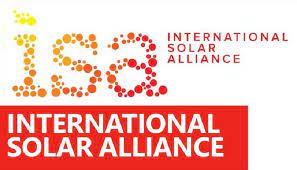
The fourth general assembly of The International Solar Alliance (ISA), is to be held virtually between October 18th and October 21st, 2021, and will be presided over by Shri R.K. Singh, Minister for Power, New and Renewable Energy, Government of India and the President of the ISA Assembly.
- The ISA Secretariat has planned a series of technical sessions on various strategic initiatives of the ISA on October 18th, 2021, and technical sessions on various emergent issues in the solar and clean energy sector in partnership with partner and other organizations on October 20th and 21st, 2021.
- The Fourth Assembly of the ISA will deliberate on the key initiatives around the operationalisation of the OSOWOG initiative, the $1 trillion Solar Investment Roadmap for 2030, and approval of a Blended Financial Risk Mitigation Facility.
- World leaders of ISA member countries will also discuss the strategic plan of the ISA for the next five years encompassing a Country Partnership Framework, Strategy for Private Sector Engagement, and initiatives such as Viability Gap Financing scheme to facilitate affordable finance for solar energy projects across ISA’s membership.
- The ISA will also discuss the partnership with Global Energy Alliance (GEA) to scale up technical and financial support to LDCs and SIDS.
- The Assembly is the apex decision-making body of ISA, in which each member country is represented.
Geospatial Energy Map Of India:
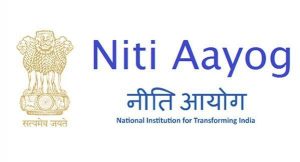
Geospatial Energy Map of India was launched by Dr Rajiv Kumar (Vice Chairman, NITI Aayog), Dr V K Saraswat (Member, NITI Aayog), and Shri Amitabh Kant (CEO, NITI Aayog) on 18 October 2021.
- NITI Aayog in collaboration with Indian Space Research Organisation (ISRO) has developed a comprehensive Geographic Information System (GIS) Energy Map of India with the support of Energy Ministries of Government of India.
- The GIS map provides a holistic picture of all energy resources of the country which enables visualisation of energy installations such as conventional power plants, oil and gas wells, petroleum refineries, coal fields and coal blocks, district-wise data on renewable energy power plants and renewable energy resource potential, etc through 27 thematic layers.
- The map attempts to identify and locate all primary and secondary sources of energy and their transportation/transmission networks to provide a comprehensive view of energy production and distribution in a country.
International Monetary And Financial Committee Meeting:
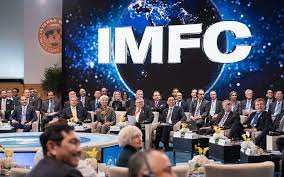
International Monetary and Financial Committee meeting was held recently.
- The meeting was attended by Governors/Alternate Governors representing 190-member countries of the IMF.
- The discussions at the meeting centered on “vaccinate, calibrate and accelerate” which is the theme of the Managing Director’s Global Policy Agenda.
- The members of the IMFC elaborated the actions and measures taken by member countries to combat COVID-19 and facilitate economic recovery.
IMFC:
- The IMFC has 24 members, drawn from the pool of 187 governors. Its structure mirrors that of the Executive Board and its 24 constituencies. As such, the IMFC represents all the member countries of the Fund.
- Functions: The IMFC meets twice a year, during the Spring and Annual Meetings. The Committee discusses matters of common concern affecting the global economy and also advises the IMF on the direction its work.
- At the end of the Meetings, the Committee issues a joint communiqué summarizing its views. These communiqués provide guidance for the IMF’s work program during the six months leading up to the next Spring or Annual Meetings. There is no formal voting at the IMFC, which operates by consensus.
World Food Day:
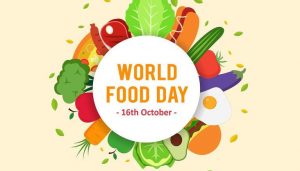
World Food Day is being celebrated every year on October 16 to commemorate the date of the founding of the United Nations Food and Agriculture Organisation in 1945.
- The theme for World Food Day this year is “Our actions are our future- Better production, better nutrition, a better environment and a better life.”
- World Food Day was established in November 1979, as suggested by former Hungarian minister of agriculture and food Dr Pal Romany. It gradually became a way to raise awareness about hunger, malnutrition, sustainability and food production.
About FAO:
- It is a specialized agency of the United Nations that leads international efforts to defeat hunger.
- Headquarters: Rome, Italy.
- Founded: 16 October 1945.
- Goal of FAO: Their goal is to achieve food security for all and make sure that people have regular access to enough high-quality food to lead active, healthy lives.
E-Waste Generation:
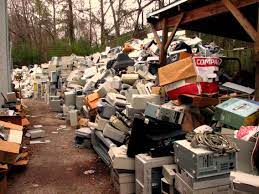
International E-Waste Day has been observed on 14th October since 2018.
- The aim of the day is to raise awareness about the millions of tonnes of e-waste generated worldwide each year, which has a negative impact on the environment and natural resources.
- Earlier this year, the Principal Bench of National Green Tribunal (NGT) issued directions for the implementation of E-Waste (Management) Rules, 2016.
- E-Waste is short for Electronic-Waste and the term is used to describe old, end-of-life or discarded electronic appliances. It includes their components, consumables, parts and spares.
- It is categorised into 21 types under two broad categories:
- Information technology and communication equipment.
- Consumer electrical and electronics.
- Laws to manage e-waste have been in place in India since 2011, mandating that only authorised dismantlers and recyclers collect e-waste. E-waste (Management) Rules, 2016 was enacted in 2017.
- India’s first e-waste clinic for segregating, processing and disposal of waste from household and commercial units has been set-up in Bhopal, Madhya Pradesh.
- Originally, the Basel Convention (1992) did not mention e-waste but later it addressed the issues of e-waste in 2006 (COP8).
- The Nairobi Declaration was adopted at COP9 of the Basel Convention on the Control of the Trans-boundary Movement of Hazardous Waste. It aimed at creating innovative solutions for the environmentally sound management of electronic wastes.
E-waste Generation:
- This year’s Waste Electrical and Electronic Equipment (WEEE) will total about 57.4 million tonnes (MT) and will be greater than the weight of the Great Wall of China, Earth’s heaviest artificial object.
- According to the Central Pollution Control Board (CPCB), India generated more than 10 lakh tonnes of e-waste in 2019-20, an increase from 7 lakh tonnes in 2017-18. Against this, the e-waste dismantling capacity has not been increased from 7.82 lakh tonnes since 2017-18.
The Earthshot Prize 2021:

Vidyut Mohan, a Delhi-based entrepreneur, won the inaugural edition of The Earthshot Prize.
- He won it for his innovative technology that recycles agricultural waste to create fuel.
- It is an award set up by Prince William and the Royal Foundation, the charity founded by the Duke and Duchess of Cambridge, and historian David Attenborough.
- Earlier, Sir David Attenborough has also been conferred with the Indira Gandhi Peace Prize for 2019.
- Established in 2020, 2021 was the first year when awards were handed out to finalists for their contributions
- The award will honour five finalists between 2021 and 2030 for developing solutions to fight the climate crisis.
- They will receive a prize of one million Euros. The winners will be chosen by the Earthshot Prize Council.]
- Each year five winners will be selected, one for each of the Five United Nations Sustainable Development Goals(SDGs) :
- Restoration and protection of nature
- Air cleanliness
- Ocean revival
- Waste-free living
- Climate action.
- Prizes could be awarded to a wide range of individuals, teams or collaborations – scientists, activists, economists, community projects, leaders, governments, banks, businesses, cities, and countries – anyone whose workable solutions make a substantial contribution to achieving the Earthshots.
- Objectives:
- To encourage and support the development of solutions for Earth’s environmental problems.
- To incentivise change and help repair the planet over the next ten years.
- To turn the current pessimism surrounding environmental issues into optimism, by highlighting the ability of human ingenuity to bring about change, and inspiring collective action.
The Earthshot Prize 2021 Indian Winner:
- “Clean our Air” Takachar, India: A portable machine created to turn agricultural waste into fertiliser so that farmers do not burn their fields and cause air pollution.
- This technology will help convert crop residues into sellable bio-products like fuel and fertilizers.
- The technology reduces smoke emissions by 98%.
- The burning of agricultural waste causes air pollution that in some areas has reduced life expectancy by a decade.
Aadhaar Hackathon 2021:
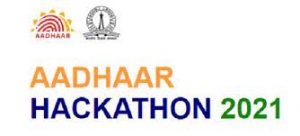
The Unique Identification Authority of India (UIDAI) will be hosting a Hackathon titled “Aadhaar Hackathon 2021”.
- This is the first-ever event being conducted by the Aadhaar team.
- A hackathon is an event, usually hosted by a tech company or organization, where programmers get together for a short period of time to collaborate on a project.
- Its target is to to identify young innovators in the field of information technology
- To solve the hackathon challenges through innovative technological solutions, UIDAI is reaching out to the young minds of all the Engineering colleges.
- Themes: Aadhaar Hackathon 2021 is themed around two topics.
- Enrolment and Update: It essentially covers some of the real-life challenges being faced by the residents while updating their address.
- Identity and Authentication: UIDAI is soliciting innovative solutions to prove Identity without sharing the Aadhaar number or any demographics information.
- Also, it is looking for innovative applications around face authentication Application Programming Interface (APIs), the newly launched authentication modality of UIDAI.
- The objective is to popularize some of the existing and new APIs to solve the needs of residents.
Allium Negianum:
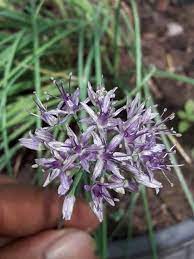
A plant discovered in Uttarakhand in 2019 has been newly confirmed as a new species of Allium — the genus that includes many staple foods such as onion and garlic, among 1,100 species worldwide. The new species is described in journal PhytoKeys.
- In 2019, Dr Anjula Pandey, Principal Scientist at ICAR-National Bureau of Plant Genetic Resources in New Delhi, together with scientists Drs K Madhav Rai, Pavan Kumar Malav and S Rajkumar, came across plants of this onion species, which they have named Allium negianum, in the border area of Malari village, in Chamoli district of Uttarakhand.
- It grows at 3,000 to 4,800 m above sea level and can be found along open grassy meadows, sandy soils along rivers, and streams forming in snow pasture lands along alpine meadows, where the melting snow helps carry its seeds to more favourable areas.
- With a narrow distribution, this newly described species is restricted to the region of western Himalayas and hasn’t yet been reported from anywhere else in the world.
- The scientific name Allium negianum honours the late Dr Kuldeep Singh Negi, an explorer and Allium collector.
- Although new to science, this species has long been known under domestic cultivation to local communities.
- So far only known from the western Himalaya region, Allium negianum might be under pressure from people looking to taste it.
204th Birth Anniversary Of Sir Syed Ahmad Khan:
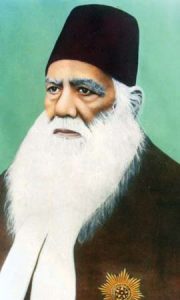
He was born on October 17, 1817.
- Sir syed Ahmed khan was a teacher, politician,social reformer etc.
- He was also the founder of Aligarh muslim university.
- Sir syed Ahmed khan has often been criticised as the father of Two nation theory which led to the formation of two seperate nations i.e. India and Pakistan.
- It is erroneously believed by some historians that the Hindu-Muslim divide in India was the by-product of the two-nation theory which supposedly had its origin in Sir Syed’s ideology.
- Nationalism” as a consciously-held idea was a 20th century phenomenon even in Europe, from where it was imported to India.
- Eminent historian Anil Seal has rightly pointed out that during Sir Syed’s times, “there were no two nations, there was not even one nation, there was no nation at all.”
- Till 1898, when Sir Syed breathed his last, there was nothing like an Indian “nation”, nor did the founding fathers of the Indian National Congress make such a claim.
- Sir Octavian Hume, the founder of the Congress, talked of “a congeries of communities”, not a nation.
- Sir Syed’s concept of nation was inextricably woven with secular ideals.
- Sir Syed believed in a multiculturalism under which all cultural communities must be entitled to equal status under state.




